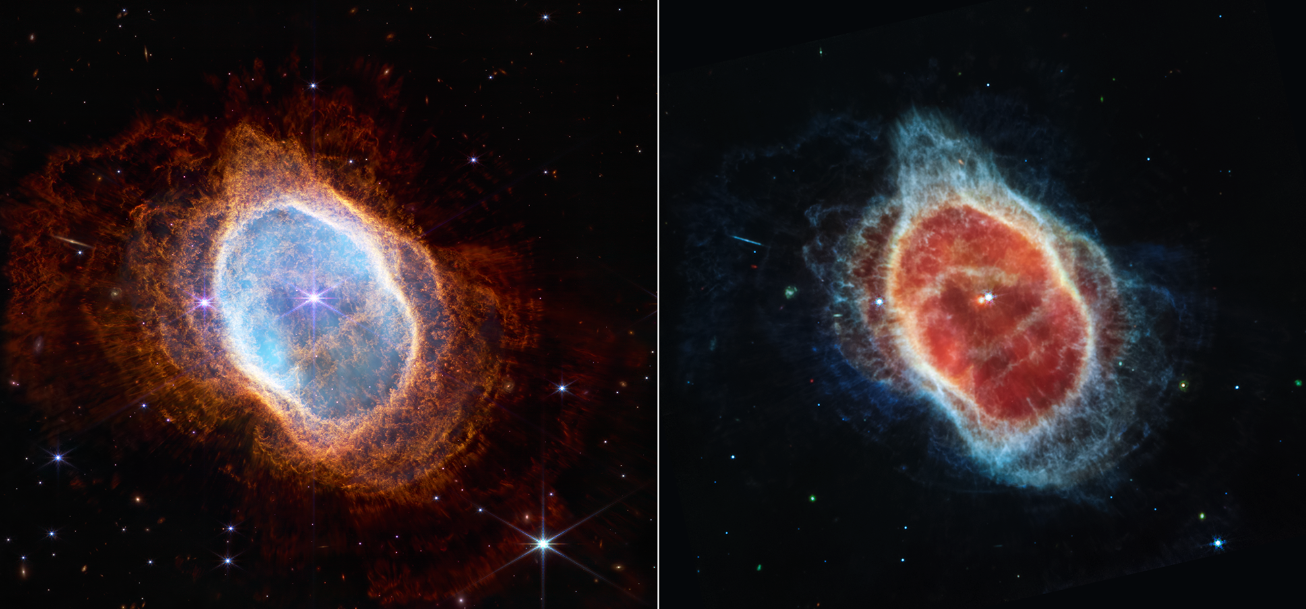Looking up to a vast, dark sky at night, all you see is an inky, abyssal pool littered with glowing white flecks. Researchers, students, and generally people around the world have been fascinated by what may lie beyond Earth’s atmosphere for generations.
With this new era comes new and better technology, which is where the James Webb Space Telescope comes into play. The James Webb Space Telescope, commonly abbreviated JWST, was launched into outer space on the 25th of December, 2021, with the purpose “to understand the Universe and our origins,” as stated by science.nasa.gov. After some time, JWST began snapping pictures of its view.
Using both its near-Infrared camera (NIRCam, left) and its mid-Infrared instrument (MIRI, right), JWST captured two beautifully colorful pictures of the Southern Ring Nebula. These photos were released on July 12th, 2022.

That same day, JWST would release an image taken using the NIRCam. This picture would surprise the world, holding the internet awestruck at the sight of so many galaxies in one photo. This was titled, “Webb’s First Deep Field.”

What looks like an artist’s rendition of the eye of a hurricane is actually a photograph of the heart of the Phantom Galaxy. NASA released this image on August 29th, 2022.
“The Phantom Galaxy is around 32 million light-years away from Earth in the constellation Pisces, and lies almost face-on to Earth,” states esawebb.org. “This, coupled with its well-defined spiral arms, makes it a favourite target for astronomers studying the origin and structure of galactic spirals.”

At first glance, this looks like a picture of the ringed planet Saturn, but what you see is one of our solar system’s ice giants! On September 21st, 2022, JWST captured a stunning photograph of Neptune and its rings, as well as one of its moons, Triton, shining brightly.

NASA’s NIRCam and MIRI processed a striking image taken of the Crab Nebula, “in the search for answers about the supernova remnant’s origins,” as per esawebb.org’s words. The picture was released Octoner 30th, 2023.

Beyond the clouds, the sun and moon, there is a vast starscape; a seemingly endless universe shining with galaxies and strange forms of matter, rapidly growing, shrinking, forming anew and destroying itself simultaniously. There are some things that scientists may never be able to explain, but for now, humanity can marvel at the beauty of our universe, for however far it may stretch out into nothingness.















